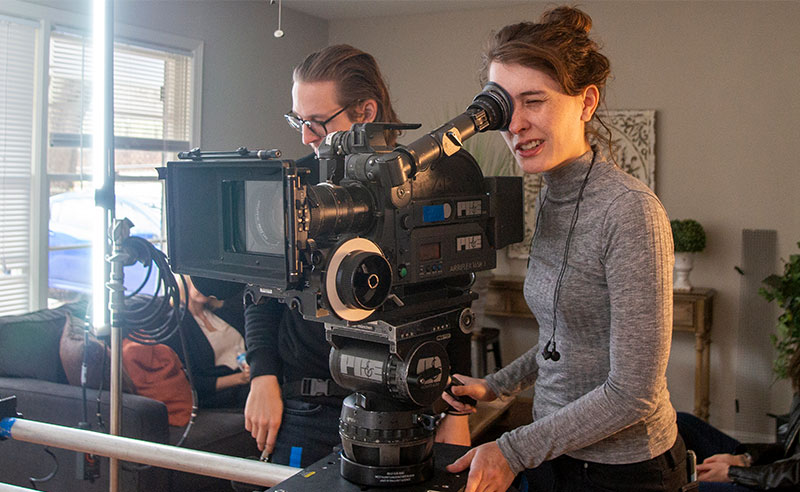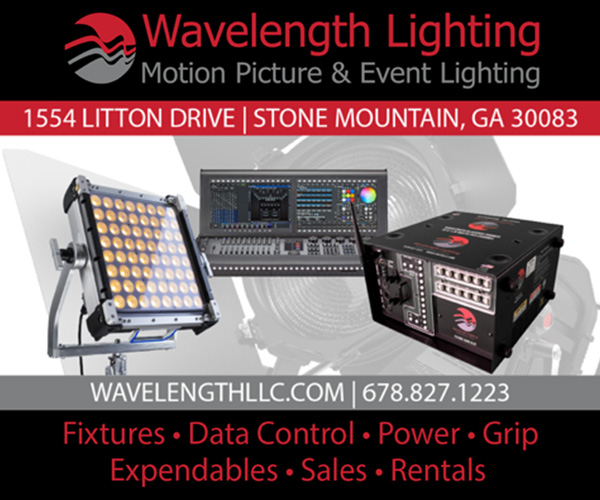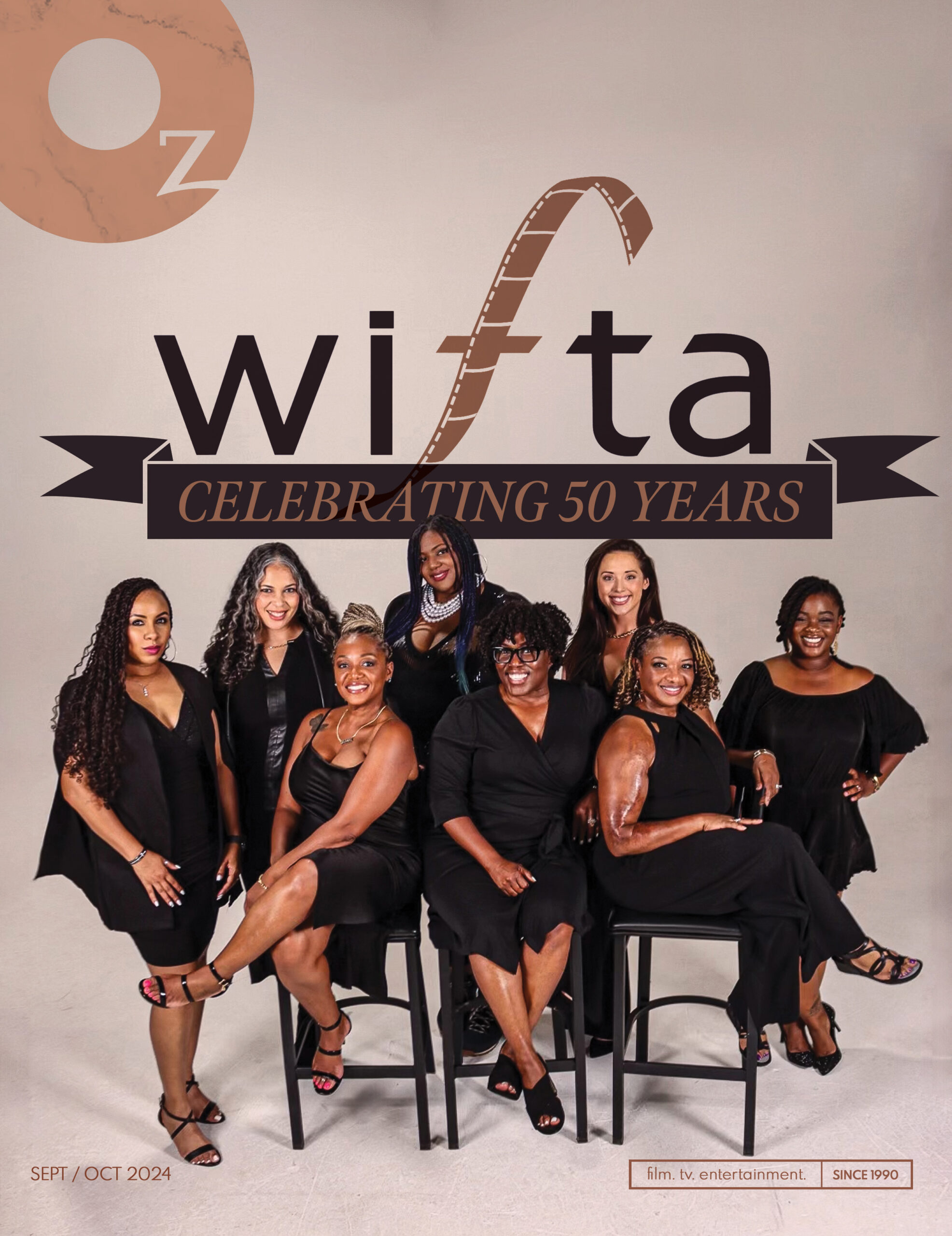

The use of celluloid film continues to decline each year. Over ninety-percent of major films have been shot on digital video, but there is still a small percentage of filmmakers who still use film to tell their stories, oftentimes this is a stylistic choice. Currently, things are moving faster and technology continues to improve. Kate Hinshaw is a tactile filmmaker and cinematographer who works with digital and film cameras alike. Coming from an experimental background, she is interested in using the cinematic gaze to render visible the interiority of the feminine. Hinshaw works with 16mm and super 8mm film through bleaching, scratching, painting, and burning the emulsion in order to tell stories through color and texture. She is the founder of the publication, Analog Cookbook, a biannual film journal and space for celluloid artists to be fearlessly weird, artistic, and relentless in the pursuit of visual storytelling. Oz sat down with Hinshaw to learn more about how her filmmaking process and journey are going.
Oz: Where are you from and how did you get into shooting on film?
Kate Hinshaw: I’m from right here in Atlanta, so this is my hometown and I actually grew up not too far from where the Kodak Lab is now. Really did not stray very far at all, but I got into film I think back in 2011 or 2012. I purchased a super 8mm camera, a Braun Nizo, for $150 or something like that and in part it was because that was cheaper than buying a DSLR.
In some ways we talk about filming being so inaccessible, but in some ways it can be more accessible. In my case, I just kind of picked up this camera and then was able to find other film cameras at yard sales around Atlanta that I could work with. I just was really interested in this idea of texture in filmmaking that I felt like digital didn’t have. When you’re shooting with film, you just get this really beautiful, amazing kind of organic feeling with film that makes it feel more alive. I’ve kind of been chasing that ever since.
As far as tactile filmmaking, what are the particular textures that you use to put on the film and what is the process?
The process looks like using whatever household things I can get my hands on, be that bleach or stickers or things from craft stores. I’m a big fan of raiding Michaels to just find whatever inks and paints I can apply to the film itself. It’s a very physical process too. I spend a lot of time scratching and kind of drawing these animations within the film itself.
I’d also say it’s a process of letting go because you don’t really know what it’s going to look like. Usually when I start a project, I’m not even sure what I’m trying to say. I’m kind of just feeling … I’m doing what feels good, adding what colors feel right and then deciding the meaning after the fact, or letting the form kind of dictate the content of it, if that makes sense.
How do you prepare a shot without the use of a monitor?
If it’s a narrative film I’m working on with film, I’m going to rent an ARRIFLEX SR3 from PC&E because that actually has the ability to have a monitor. You won’t get the same histogram false colors. You won’t be able to really see the exposure for what it actually is, but at least allows a team to be able to look at the frame. Your production designer can come in and say, “That doesn’t look right,” or your boom operator can see where they’re standing. That kind of becomes very important with narrative work.
With more experimental works, again, there’s a little bit of that letting go. If it’s just me shooting or just me and one other person, it’s a little less scary in thinking about what’s going to turn out. I use a light meter. I have a Sekonic light meter that I live and die by, and check three times before I actually roll film. The color is a big part that is determined by the film stock you’re using. If you’re using 500T, that’s going to be tungsten balance ASA of 500. That’s going to look very different than a 50D roll of connect vision three roll of 50D.
To be completely honest, it’s a process of challenging your own perfectionism and kind of letting go of a lot of that. If the color looks a little bit off, I’m usually not bothered by that. For things that, maybe if it’s really off, you can correct it in digital if you need to. For the most part, I would say it’s thinking about the film stock that is going to give you the look of the film.
How do you choose to look for the actual film?
I tend to favor a more naturalistic look. I really like shooting through windows when using heavy diffusion. I think that looks really lovely, especially with film and creating this kind of ethereal look. It also depends on the project because every project is different. I just shot a 16mm documentary and that was mostly just working with natural light because that’s what we had. That was using Ektachrome, which is my go-to film stock. I love Ektachrome. It’s a very saturated and beautiful stock that, if you’ve ever opened up a National Geographic that’s from the ’80s or ’70s, that’s all kind of like the Ektachrome look. Even that 16mm film, I worked with a colorist on that and he asked me the same question, “What’s the look of this piece?” I was like, “It’s Ektachrome. I want it to stay Ektachrome. I don’t want to lose that quality.” He really worked with me to kind of just enhance that look a little bit, but I don’t do heavy color on most projects.

“What film offers over digital is this kind of texture and organic feeling to it that digital doesn’t have. I think it changes the process entirely in filmmaking.”
How does the film actually get developed? Walk us through that process.
I like to develop a lot of film on my own. If I’m shooting Ektachrome, I’m going to process E6 which I actually have some cans of chemicals up … It’s a three-step process. It’s very easy. I have my recipe that I share on my website and I’ve shared in my film publication that I use. That process is, mostly just for me, has been developing in my own bathroom.
I also have processed a lot of black and white film using Caffenol, which is a coffee-based film processor or film developer, rather. It’s instant coffee, vitamin C and washing soda, or soda ash. Really easy process, non-toxic, which is great, and that’s what I do when it’s my own projects that are a little bit more experimental.
In other cases, I’ve sent my work off to either Kodak Color Lab or Mono No Aware in New York. Out of those three labs, I think my favorite lab to work with is Mono No Aware because they’re an artist-run organization in Brooklyn that does a great job, offers great prices and price becomes a huge factor.
What kind of protection does the film require of you and the film itself?
I’m usually wearing rubber gloves and a face mask. Before the pandemic started, I had a 100 pack of the surgical masks just because you don’t really want to breathe in particularly ESIX chemistry. It’s a pretty nasty chemical, so you don’t really want to breathe it in. The film itself, I find film as much more resilient than I ever kind of think it is when I go into the project.
When processing film, you can use a spiral tank like a LOMO tank that keeps the film from touching each other. Essentially that allows the image to get processed because that’s where you’re going to get in trouble, if the film sticks to itself. If the film sticks to itself, it won’t process. It can create double exposures. Spiral tank allows it to kind of be evenly spaced out throughout. I don’t have a spiral tank. I shove all my film like spaghetti and a 35mm tank. I get mistakes in my film when I process it myself. I get double exposures. Occasionally, I get parts where the emulsion is starting to come off and, more often than not, I get watermarks. If you’re not using a Lomo tank, [watermarks are] unavoidable in some ways, but again, it’s part of the process and part of just having fun with it. If it’s film that I really care about and want it to be very clean, I’m going to send it off to the lab.
Tell us about your Analog Cookbook.

Analog Cookbook is a zine that I started in 2019. It’s specifically geared to celebrate and share analog filmmaking. It’s got dark room recipes, projects people are working on, artists profiles, things like that. I would say 16mm film, VHS 35mm, even some photography projects, 120 film and the idea kind of came about. It was actually inspired by a zine made by Helen Hill, who is a filmmaker who created this zine called Recipes for Disaster.
I’m a huge fan of Helen Hill. She always kind of talked about accessibility in filmmaking and this idea that it’s not about the big budget or the gear that you have. It’s about the story behind the film. I really wanted to create a space to promote accessibility in filmmaking in a space that someone could pick up this book and get inspired, regardless if they’ve ever picked up a camera or not. I want people to feel that, if they want to shoot on a film, that they can and I want to be able to provide the tools to do that and share this community that I’m a part of with anyone and everyone who wants to be a part of it.






